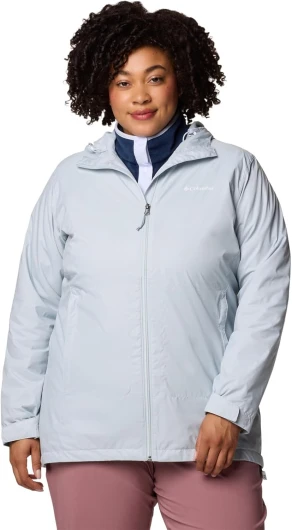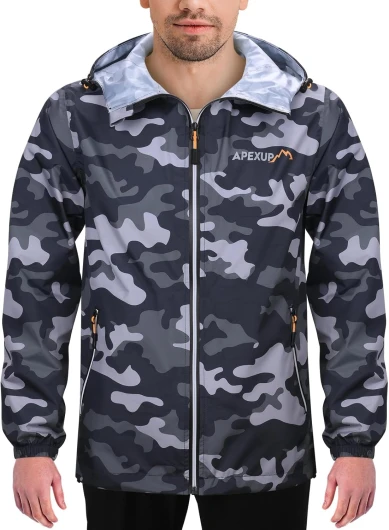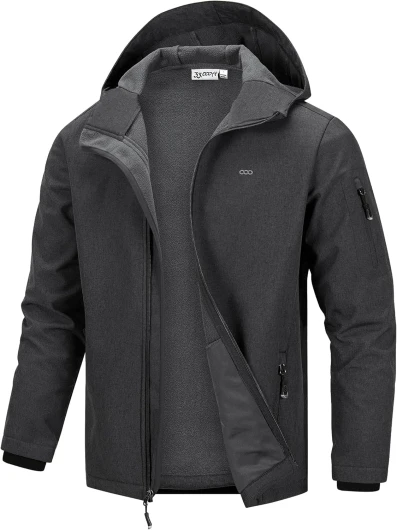
Understanding Material Properties
Unlocking the Secrets of Material Attributes
In the world of hiking boots, understanding the distinct properties of various materials is crucial for selecting the right gear that keeps you warm and dry. These materials serve as the backbone of clothing that efficiently manages your body heat in wet conditions. Let’s delve into how these properties affect your choice of hiking boots. Water resistance and thermal conductivity are pivotal when discussing the best fabrics for wet environments. It’s essential for materials to both repel water and maintain body temperature. They need to excel in moisture wicking and air retention, ensuring body warmth isn’t compromised. Natural options, like wool, are praised for their insulating properties and ability to keep you warm even when wet. Wool contains unique air pockets that retain heat, making it an excellent choice when venturing into cold weather. This natural fabric has become synonymous with thermal conductivity, keeping adventurers comfortably warm. On the synthetic spectrum, polyester is frequently used in hiking boots. Esteemed for its water-resistant qualities, it effectively wicks away moisture, maintaining warmth by preventing external water penetration. It’s these properties that make polyester a preferred choice for wet and cold conditions. The interplay of all these materials ensures optimal warmth by balancing fabric properties with environmental needs. Even as you explore insulation technologies and the role of linings, understanding the inherent advantages of both natural and synthetic materials is foundational to staying warm on your hiking adventures.Natural vs. Synthetic: A Comparative Analysis
Deciphering Natural Insulation: Wool and More
When it comes to choosing hiking boots that keep you warm even when wet, understanding the insulating properties of natural materials like wool can be crucial. Wool is renowned for its ability to regulate body temperature and keep the body warm. Its moisture-wicking nature makes it a preferred choice in cold weather conditions as it helps in maintaining warmth even in wet conditions. The air pockets within wool fibers trap heat, providing effective thermal insulation which is vital for staying warm.Synthetic Fibers: Polyester's Role in Retaining Heat
Contrastingly, synthetic fibers such as polyester offer their own set of benefits for clothing, particularly in damp environments. Polyester is often lauded for its water-resistant properties, as well as its ability to dry quickly, making it a frontrunner in the realm of thermal clothing materials. While it may boast a lower thermal conductivity than wool, it excels in moisture wicking, thereby aiding in keeping the body's warmth intact.Comparing Natural and Synthetic: Which is Best?
Natural materials like wool tend to hold an edge in terms of warmth due to superior thermal properties—especially in adverse conditions where maintaining body heat is paramount. Meanwhile, synthetic fabrics such as polyester are engineered for specific properties like water resistance and quick-drying features, making them an excellent choice for those who encounter frequent wet conditions. Both natural and synthetic materials have their place in the design of hiking boots, and understanding their specific properties can significantly impact warmth and comfort levels. Thus, identifying the best fabric for your specific hiking needs involves balancing these factors to harness the full potential of effectively keeping warm in wet conditions.Insulation Technologies in Hiking Boots
Exploring the Science of Insulation in Hiking Boots
The right pair of hiking boots can be the difference between a comfortable trek and a frozen ordeal, especially in damp conditions. When the objective is to keep warm even when wet, understanding the science behind insulation becomes essential. Modern hiking boots are often designed with a focus on preserving body heat. The incorporation of materials with superior thermal conductivity is crucial for keeping warm. Both natural and synthetic fibers play pivotal roles; let's delve into their unique insulating properties:- Natural Materials: Wool is one of the best natural insulators, known for its ability to retain heat through air pockets formed within the fibers. It offers excellent moisture-wicking capabilities, maintaining warmth even when wet.
- Synthetic Fabrics: Materials like polyester are engineered to mimic the thermal properties of wool, providing warmth while remaining lightweight. These fabrics have advanced moisture-wicking technologies essential for a breathable experience in both wet and dry conditions.
The Role of Linings and Membranes
The Vital Role of Inner Linings and Membranes
In the pursuit of warmth during wet hiking adventures, the inner linings and membranes of your hiking boots play a crucial role. These elements are designed to work in tandem with the exterior materials, providing an additional layer of defense against moisture while maintaining the necessary thermal conditions inside the boot. The primary function of these linings and membranes is to balance moisture wicking with water resistance. Materials such as Gore-Tex are often employed due to their breathable properties that allow sweat to escape without letting water in. This keeps your feet warm and dry even when traversing damp terrains. Similarly, the insulating properties of boot linings are enhanced with the choice of fabrics. Synthetic fibers like polyester often come in various forms, offering both warmth by creating additional air pockets and moisture control by ensuring sweat does not linger, thus stabilizing your body temperature. For those seeking a natural alternative, wool remains a classic choice in keeping warm. Known for its thermal conductivity benefits, wool continues to serve well in moisture management, efficiently trapping body heat while maintaining comfort levels in colder, wet conditions. Ultimately, the choice of linings and membranes in your hiking boots can significantly affect your experience. Checking for features like seam-sealed membranes and antimicrobial treatments can contribute to boots that not only resist wetting but also combat bacteria growth, improving overall comfort and longevity. Regular care and maintenance tailored to your boots' specific materials can further optimize their performance.Care and Maintenance for Optimal Performance
Maintaining Your Hiking Boots for Longevity and Performance
Proper care and maintenance of your hiking boots are crucial to ensure they retain their insulating properties and keep you warm even in wet conditions. The materials used in hiking boots, whether natural or synthetic, require specific attention to maintain their thermal conductivity and moisture-wicking capabilities.
- Cleaning: After each hike, remove dirt and debris from your boots. Use a soft brush and mild soap to clean the fabric and leather. This helps maintain the integrity of the materials and prevents deterioration.
- Drying: Allow your boots to dry naturally at room temperature. Avoid direct heat sources like radiators, as they can damage the materials and reduce their ability to keep warm. Stuffing boots with newspaper can help absorb moisture and maintain shape.
- Waterproofing: Regularly apply a water-resistant treatment to enhance the boots' ability to repel water. This is especially important for maintaining warmth in wet conditions, as it prevents water from compromising the insulating properties of the fabrics.
- Conditioning: For leather boots, use a conditioner to keep the material supple and prevent cracking. This not only extends the life of the boots but also ensures they continue to provide the best protection in cold weather.
- Inspection: Regularly check for signs of wear and tear. Pay attention to the linings and membranes, as these play a crucial role in keeping your feet warm and dry. Replace any damaged components to maintain optimal performance.
By following these care tips, you can ensure your hiking boots remain effective in keeping your body temperature regulated, even when faced with challenging wet conditions. Proper maintenance not only extends the life of your boots but also enhances your overall hiking experience by ensuring your feet stay warm and comfortable.
Expert Recommendations and User Experiences
Expert Insights on Material Selection
When it comes to choosing the right materials for hiking boots, experts emphasize the importance of understanding the unique properties of each fabric. Natural materials like wool are highly regarded for their ability to keep warm even when wet, thanks to their moisture-wicking and insulating properties. Wool's natural air pockets trap body heat, making it an excellent choice for cold weather conditions.
On the other hand, synthetic fibers such as polyester are praised for their thermal conductivity and water-resistant capabilities. These materials are engineered to maintain body temperature by keeping moisture out, which is crucial for staying warm in wet conditions. The best approach often involves a combination of both natural and synthetic materials to leverage the strengths of each.
User Experiences and Practical Tips
Experienced hikers often share that the key to keeping warm is layering clothing materials effectively. This means starting with a base layer that has excellent moisture-wicking properties to keep the body dry, followed by insulating layers that retain heat. The outer layer should be water-resistant to protect against wet conditions.
Users also highlight the importance of proper care and maintenance of hiking boots to ensure optimal performance. Regular cleaning and reproofing of water-resistant materials can significantly extend the life of your boots and enhance their thermal properties.
Ultimately, the choice of materials should align with the specific conditions you expect to encounter. Whether you prioritize natural warmth or synthetic durability, understanding the thermal properties and maintenance needs of your hiking boots will help you make informed decisions for your outdoor adventures.











